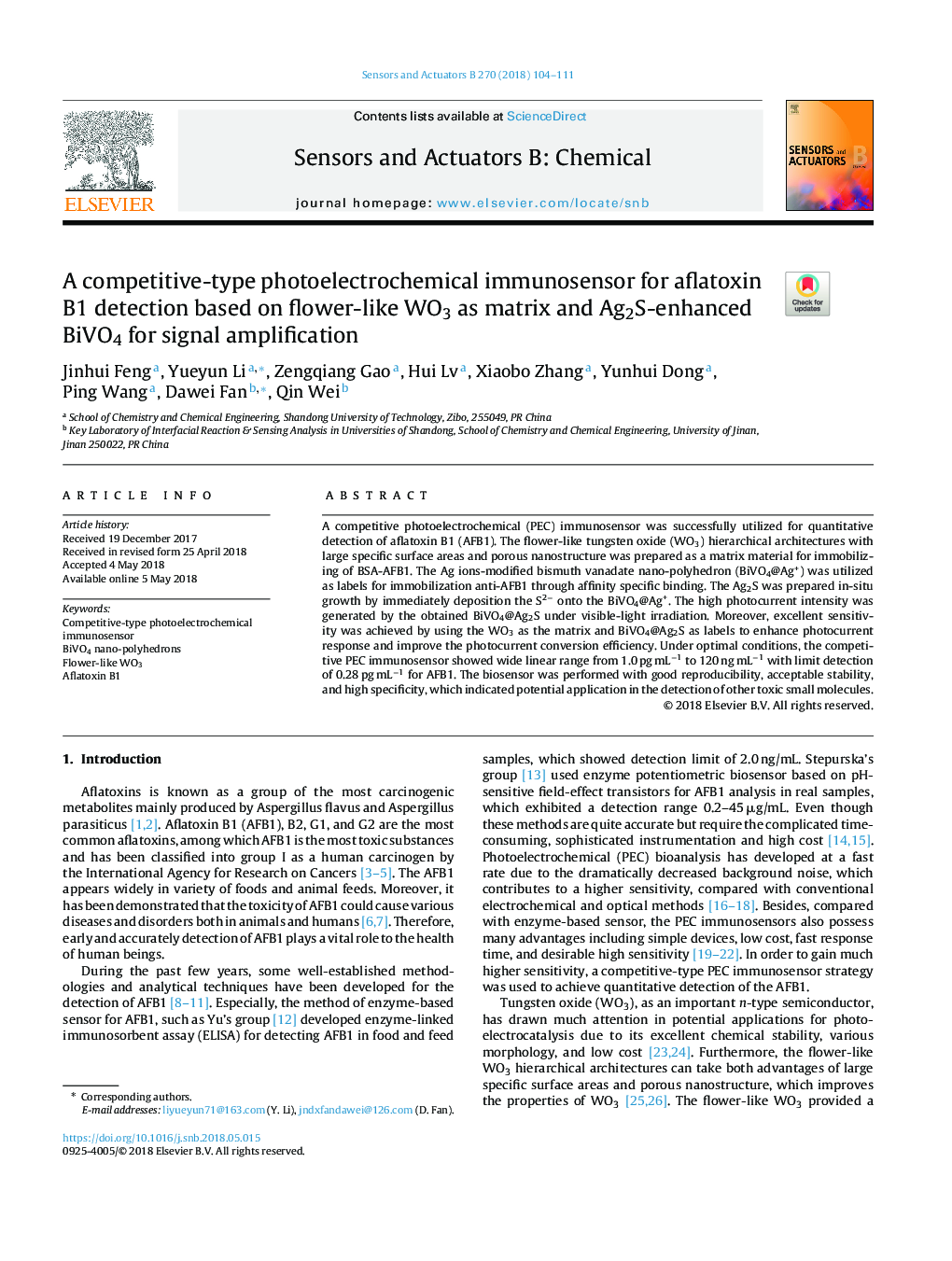| Article ID | Journal | Published Year | Pages | File Type |
|---|---|---|---|---|
| 7139046 | Sensors and Actuators B: Chemical | 2018 | 8 Pages |
Abstract
A competitive photoelectrochemical (PEC) immunosensor was successfully utilized for quantitative detection of aflatoxin B1 (AFB1). The flower-like tungsten oxide (WO3) hierarchical architectures with large specific surface areas and porous nanostructure was prepared as a matrix material for immobilizing of BSA-AFB1. The Ag ions-modified bismuth vanadate nano-polyhedron (BiVO4@Ag+) was utilized as labels for immobilization anti-AFB1 through affinity specific binding. The Ag2S was prepared in-situ growth by immediately deposition the S2â onto the BiVO4@Ag+. The high photocurrent intensity was generated by the obtained BiVO4@Ag2S under visible-light irradiation. Moreover, excellent sensitivity was achieved by using the WO3 as the matrix and BiVO4@Ag2S as labels to enhance photocurrent response and improve the photocurrent conversion efficiency. Under optimal conditions, the competitive PEC immunosensor showed wide linear range from 1.0â¯pgâ¯mLâ1 to 120â¯ngâ¯mLâ1 with limit detection of 0.28â¯pgâ¯mLâ1 for AFB1. The biosensor was performed with good reproducibility, acceptable stability, and high specificity, which indicated potential application in the detection of other toxic small molecules.
Keywords
Related Topics
Physical Sciences and Engineering
Chemistry
Analytical Chemistry
Authors
Jinhui Feng, Yueyun Li, Zengqiang Gao, Hui Lv, Xiaobo Zhang, Yunhui Dong, Ping Wang, Dawei Fan, Qin Wei,
